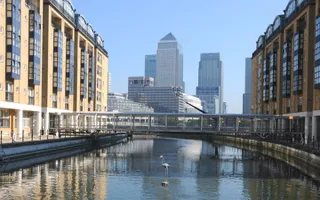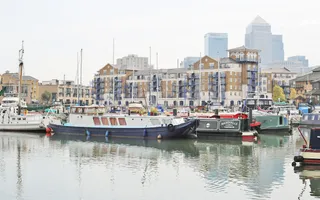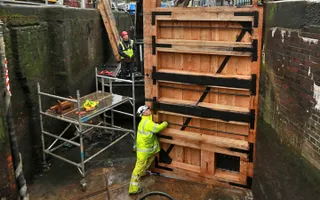Originally built for shipping, London's Docklands are now home to skyscraping offices, and stylish restaurants and bars, all based around a vibrant cosmopolitan waterside setting.
At their busiest, London's docks employed over 100,000 people, landing goods from all over the world. After the area's commercial decline, the Docklands were regenerated as a modern business and leisure district, transforming them almost beyond recognition and giving them a new lease of life.
However, the boating tradition is still alive and well, with the West India and Millwall Docks system filled with an array of moored boats and visiting vessels, from yachts and cruise ships to historic Thames barges. The waterside Museum of Docklands is located at West India Quay and charts the development of the docks and London's port history.
You can also follow the London Boating Bulletin Blog for the latest near you.
Days out in Docklands
West India Docks were built in 1802. Here, for nearly 200 years, ships unloaded rum, sugar and coffee from the Caribbean. Cargo was loaded into warehouses, transferred on to barges and delivered all over the country via the canal system.
The history
As London became a hub for world trade in the late 18th century, there was a need for large-scale official docking facilities. In 1799 Parliament passed an act allowing work to commence in the Isle Of Dogs, and the West India Docks were built by the early 19th century. The success of this led to a dock-building boom, and before the century was out, the Millwall Docks, St Katherine's, Surrey Commercial, Royals and Tilbury Docks were all completed.
In 1908 the Port Of London Authority was established to secure the financial and operational future of the tideway and its docks. Trading continued to boom. Despite damage in the Second World War, the docks continued to boom, handling a record of 61 million tonnes in 1964. But with the arrival of containerisation, roll on/roll off loading meant a decline in shipping to central London, and gradually the docks fell silent. The West India and Millwall Docks finally stopped general cargo operations in 1980, followed by the Royal Docks in 1984.
A waterspace of this size, so close to the City of London, would never stay undeveloped for long. In 1981, the London Docklands Development Corporation took over, and the reclamation of Docklands for business, housing and entertainment has given the area a new lease of life - creating a scene that the 18th Century dockers, merchants and sailors would have found impossible to comprehend. The waterspace is now managed by the Trust.
Boating through West India Dock entrance
West India Lock must be booked in advance. Availability is restricted to one hour either side of high water at London Bridge (minus roughly 20 minutes) between 7.00am to 4.30pm. Only where you have a confirmed berth or booked visitor mooring is there no charge. Plus, you'll need full salvage cover / wreck removal insurance to enter West India Dock.
To book the lock, call West India Marine Control on 03030 404040.
Billy's story
Billy Smith worked in London's Docklands for over 50 years. Hear him below talk about his experience of the area and how it's changed over the decades.








